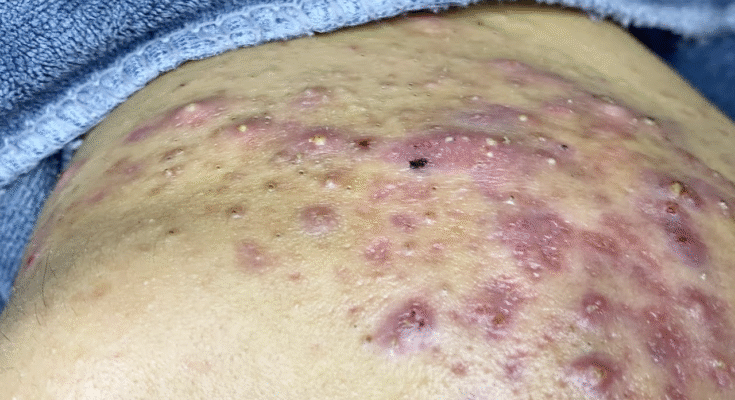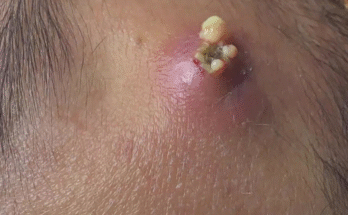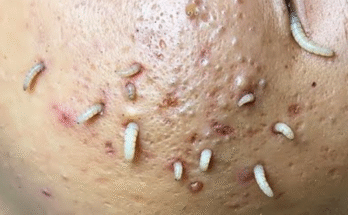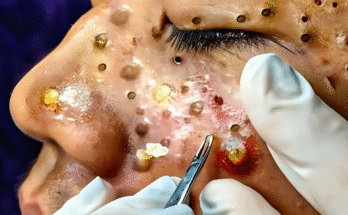Popping pimples is something almost everyone has done at least once. It can feel satisfying, and it seems like a quick way to get rid of a blemish. But what many people don’t realize is that squeezing a pimple can easily turn a small, harmless spot into a painful and infected wound. Infections aren’t just uncomfortable — they can also cause scarring, swelling, and long-lasting dark marks. In more serious but rare cases, they can even lead to dangerous skin complications.
Understanding why pimple popping can lead to infection — and how it happens — can help you avoid unnecessary damage and keep your skin healthier in the long run.
1. Popping Pimples Breaks the Skin’s Protective Barrier
Your skin acts as a shield that protects your body from bacteria, dirt, and other harmful microorganisms. When you pop a pimple, you break this natural barrier.
A pimple that hasn’t fully matured requires a lot of pressure to squeeze. This pressure:
-
Tears the skin
-
Creates an open wound
-
Allows bacteria to enter easily
-
Causes internal damage to deeper layers
Once the skin is open, bacteria have direct access to the pore and the surrounding tissue. This is the number one reason infections occur after popping.
2. Your Fingers Carry Bacteria — Even After Washing
It’s common to think washing your hands before popping a pimple makes the process “safe.” While washing definitely helps, your hands still carry:
-
Oils
-
Dirt
-
Dead skin cells
-
Bacteria underneath the nails
-
Microorganisms on the fingertips
Even a tiny amount of bacteria can enter the open pore created by squeezing. If you use your nails, the risk increases even more because nails trap germs easily.
This bacteria mixes with the fluid inside the pimple, causing red, swollen, inflamed breakouts — or even pus-filled infections.
3. Squeezing Can Push Bacteria Deeper Into the Skin
When you apply strong pressure to a pimple, you’re not just pushing pus out. You’re also pushing bacteria sideways and downward into deeper layers of the skin.
This can cause:
-
Internal infections
-
Painful lumps
-
Cyst-like bumps
-
Worsening inflammation
This is why a pimple often looks much bigger and angrier a day after you try to pop it. The trapped bacteria can continue spreading under the surface, creating a more serious infection.
In some cases, this leads to cellulitis, a painful skin infection that requires medical treatment.
4. Popping Changes the Skin’s Microbiome
Your skin isn’t sterile — it has a natural microbiome made up of healthy bacteria that protect it from harmful pathogens. When you squeeze a pimple, you disturb this balance.
The result:
-
Good bacteria die
-
Harmful bacteria multiply
-
The skin becomes more vulnerable
Think of it like disturbing a small ecosystem. When the balance breaks, infection becomes much more likely.
5. The Pus Inside Pimples Contains Bacteria
Many people assume the pus inside a pimple is “just oil.” In reality, pus contains:
-
Bacteria
-
Dead white blood cells
-
Dead skin
-
Sebum
-
Cell debris
When you pop a pimple, this bacteria-filled pus can spread on the skin around the pimple. If it enters nearby pores or small cuts, it can cause new pimples or new infections.
This is especially common in areas like:
-
Chin
-
Cheeks
-
Jawline
-
Nose
Where pores are close together and easily clogged.
6. Risk of Staph Infection and Other Harmful Bacteria
One of the biggest risks is Staphylococcus aureus — a common bacteria found on the skin. Most of the time, it’s harmless. But when it enters a wound, it can cause serious infections.
People who repeatedly pick at their skin are more likely to develop:
-
Staph infections
-
Folliculitis (infected hair follicles)
-
Boils
-
Abscesses filled with pus
These infections require medical treatment and can leave long-lasting scars.
7. Dirty Tools Make Things Worse
Some people use tools like:
-
Tweezers
-
Pins
-
Safety needles
-
Extractor tools
If these tools are not properly sterilized, they introduce bacteria directly into the skin.
A tool that looks clean is not necessarily sterile. Unless it is sanitized with alcohol or heat, bacteria remain on the surface.
Using improper tools also increases the chance of tearing the skin, creating a larger wound that’s more likely to get infected.
8. Popping Causes Inflammation That Weakens the Skin
When you squeeze a pimple, you trigger the release of inflammatory chemicals. This inflammation:
-
Swells the tissue
-
Weakens the skin
-
Increases redness and heat
-
Slows healing
Inflamed skin is more vulnerable to bacteria and more likely to become infected. That’s why popped pimples often become swollen for days.
9. Frequent Popping Damages Skin Over Time
Each time you pop a pimple, you damage the skin’s structure. Repeated trauma:
-
Thickens the skin
-
Darkens the area
-
Causes chronic inflammation
-
Leads to hardened pores that clog easily
Damaged tissue doesn’t protect itself as well, making it more prone to infection in the future.
This is why people who habitually pick at their skin often develop:
-
Infected breakouts
-
Persistent acne
-
Scarring
-
Hyperpigmentation
Their skin simply cannot defend itself the way healthy skin can.
10. The “Danger Triangle” Makes Infection Even More Serious
The area from the corners of your mouth up to the bridge of your nose — the “danger triangle” — is especially risky to pop.
This area has veins connected directly to the brain. In extremely rare cases, infected pimples in this region can lead to:
-
Serious infections
-
Abscesses
-
Cavernous sinus thrombosis (life-threatening)
While extremely unlikely, it shows why popping pimples is not as harmless as it seems.
How to Avoid Infections Without Popping
If you want to clear pimples safely, here are better options:
-
Use warm compresses to soften the pimple
-
Apply acne patches to draw out fluid
-
Use benzoyl peroxide to kill bacteria
-
Apply salicylic acid to unclog pores
-
Let the pimple heal naturally
These methods treat the pimple without breaking the skin.
Final Thoughts
Popping a pimple may feel satisfying in the moment, but it comes with serious risks — especially infection. Breaking the skin barrier, introducing bacteria, and forcing inflammation all make the area highly vulnerable. Even worse, infections can lead to scarring, swelling, and more breakouts.
The safest approach is always to avoid popping and use proper skincare methods instead. Your skin will heal faster, look clearer, and stay healthier in the long run.



